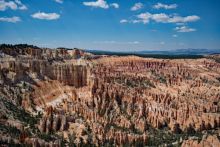Geoscience Currents transmit snapshots of the many facets of the geoscience profession, in-depth case studies of how geoscience is applied, factsheets that provide rigorous introductions to a range of geoscience topics, workforce trends, and career paths.
Partner with us to help support well-informed public policy and decision making with expert, impartial geoscience information. Visit our Sponsorships page for more information or email sponsorships@americangeosciences.org.
Displaying 1 - 10 of a total of 34 items
August 06, 2018
What is a rip current?
Rip currents are fast, concentrated flows of water that can form on beaches that have breaking waves.1 Every beach is different, but rips generally form when waves break across a wide surf zone and the beach bathymetry is uneven (e.g., if there are sandbars, piers, jetties,...
August 06, 2018
What is a rip current?
Rip currents are fast, concentrated flows of water that can form on beaches that have breaking waves.1 Every beach is different, but rips generally form when waves are breaking and the underwater surface is uneven (e.g., if there are sandbars, piers, jetties, or groins along...

April 09, 2018
Overview
The 800-mile-long Trans-Alaska Pipeline, which starts at Prudhoe Bay on Alaska’s North Slope, can carry 2 million barrels of oil per day south to the port of Valdez for export, equal to roughly 10% of the daily consumption in the United States in 20171. The pipeline crosses the Denali...
September 25, 2017
The Need for Groundwater Management: Sustaining water supplies and preventing hazards
In California, surface water from rainfall, snowmelt, and distant rivers rarely meets the state’s urban and agricultural water needs. Groundwater is an essential water source, providing 35% of the fresh water...

May 19, 2017
In Garfield County, an area of multiple land uses, geologic maps show the location and quality of the sand and gravel resources. Planners, citizens, and resource developers use this information to locate and evaluate potential deposits and make informed land-use choices.
Defining the Problem
As...

May 19, 2017
Landslide hazard maps based on geologic maps are a tool for local government officials, planners, developers, engineers, insurance companies, lending institutions, and landowners to assess the risk and take appropriate actions.
Defining the Problem
Damaging landslides occur even in vertically...

May 19, 2017
Geologic maps can help to show which areas may be more prone to landslides and therefore directly assist in making optimum engineering design choices.
Defining the Problem
U.S Highway 85 and ND Highway 22, along with numerous county roads, buildings, pipelines, and power lines, have been...

May 19, 2017
In California, detailed modern geologic maps are fundamental for evaluating how susceptible an area is to earthquake-induced landslides.
Defining the Problem
The geologic history of the Oakland, California, area has produced steep hillsides and unstable rock and soil that generate damaging...

May 19, 2017
The Sudbury region of Ontario is rich in metallic ores. Underground mining operations at the 15 active mines of Inco Ltd. and Falconbridge Ltd. in Sudbury currently produce 51,000 tons of ore per day [note: these figures are from the late 1990s], and five other mines within 500 km of Sudbury...

May 19, 2017
Geologic maps have provided the key to finding new gold deposits in Nevada.
Defining the Problem
The western states contain many gold deposits (Fig. 1), and a zone of faulted sedimentary and igneous rocks in northeastern Nevada, known as the “Carlin” trend, is the most productive region in the...
Pages
Upcoming Webinars


